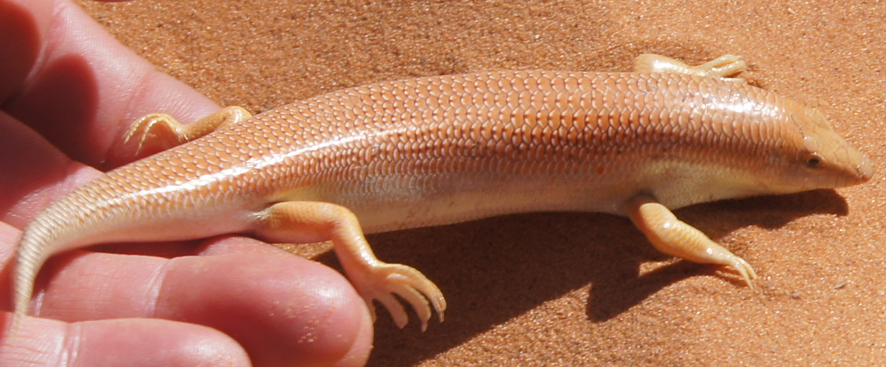Sand Fish Skink
(Scincus scincus)
The name sandfish originated because of its ability to move through sand as if it were swimming Adult sandfish usually reach about 8 inches (20 cm) in length, including the short tail.
The sandfish has developed a peculiar way of dealing with the desert heat; it possesses the ability to dive into soft sand. It does this to prevent overheating (as it is cold-blooded) and whenever it feels threatened.
This skink has a long, wedge-shaped snout with a countersunk lower jaw. Its long, tapered body is covered with smooth, shiny scales, and its legs are short and sturdy with long, flattened and fringed feet. The tail is short, tapering to a fine point. The colouration of this species is considered attractive, being yellow-caramel with brown-black cross bands. This lizard also has bead-like eyes so it can close them to keep sand out of its eyes. Similarly, its nostrils are very small to keep all of the sand out of its nose and lungs.
X-ray imaging Info By https://en.wikipedia.org/wiki/Scincus_scincus Pic By throughthesandglass.typepad.com

